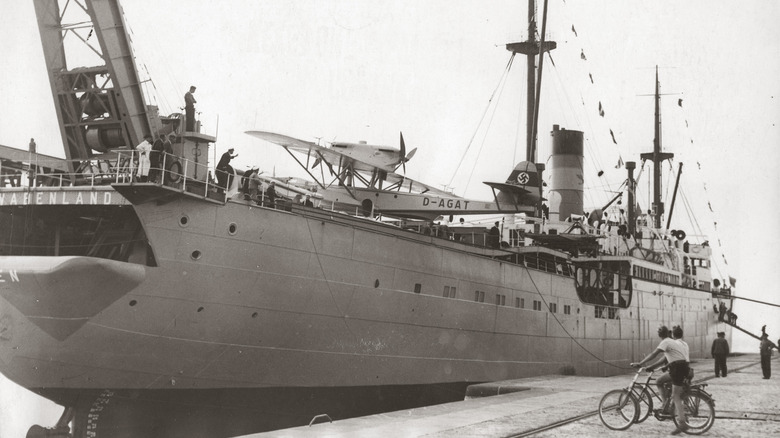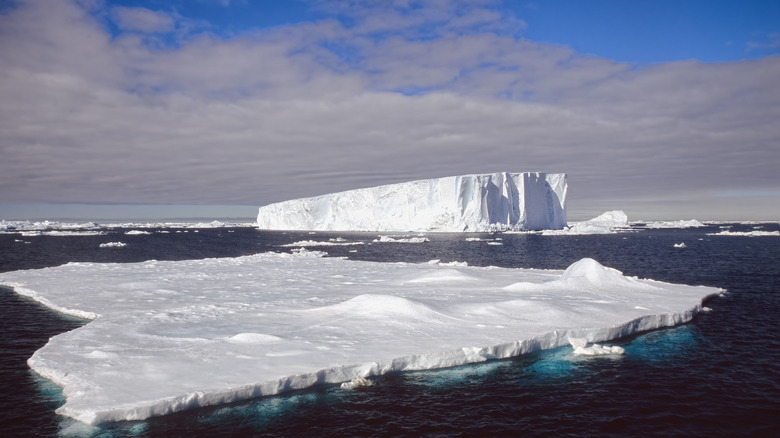The Truth About Hitler's Secret Expedition To Antarctica
The Nazis were already preparing for WWII in the late 1930s. In 1936, Germany launched the "Four Year Plan," aiming to boost its economy and guarantee self-sufficiency in producing raw materials, History Learning Site reports.
Back then, people used whale oil to prepare essential products, such as margarine and soaps, and demand for it increased during the First World War. Whale oil is used to make nitroglycerin, one of the main components of cordite. The best lubricants were also made with whale oil, vital for lubricating weapons and devices during the winter. It was even found in the sandbags in the trenches. As a result, 58,000 whales were killed during WWI (via IWM).
Norway controlled the whale oil industry for decades. Although the country remained neutral during the war, most of its factories were on British territory, which essentially guaranteed they would have access to all the whale oil. However, Hitler was determined to make Germany self-sufficient and produce its own whale oil, and Antarctica became crucial for his plans.
Germany claimed part of Antarctica
Germany found out that the British and Norwegian haven't claimed all of Antarctica's territory. In 1936, they planned an expedition to the region now known as Queen Maud Land (via History). This expedition recruited people experienced in the polar area rather than just Nazi Party members.
When the impressive ship Schwabenland left Germany in December 1938, only one Nazi officer joined the crew with 82 scientists. Ironically, the expedition was led by Captain Alfred Ritscher, who was married to a Jew. Schwabenland was equipped with flying boats used to photograph the 600,000 square kilometers in the area, named by the German as Neuschwabenland (via Cool Antarctica).
History reports that the expedition increased Antarctica's territory by 16%. The trip also explored the ocean and found part of the Mid-Atlantic Ridge, the most extensive geological feature on the planet.
The information about the Antarctic expedition was kept secret until the 1950s. Although there are stories about Nazi bunkers in the region, there is no evidence there was another expedition, as World War II forced them to change plans.

